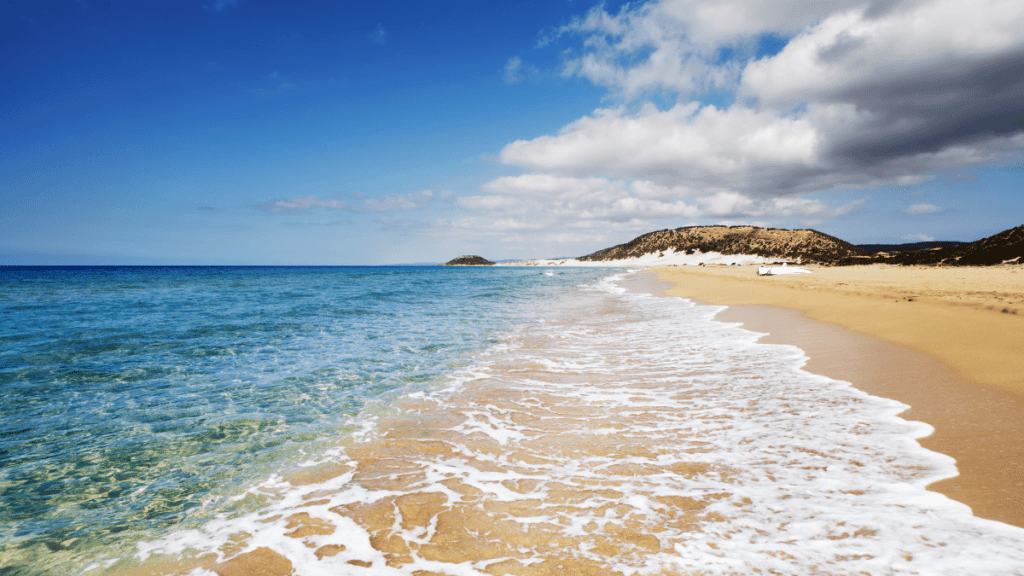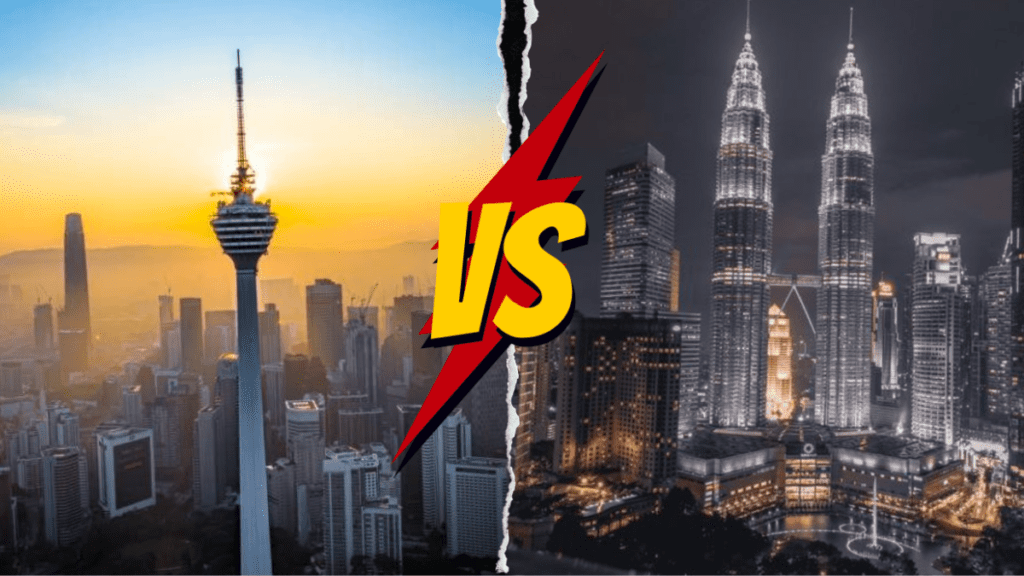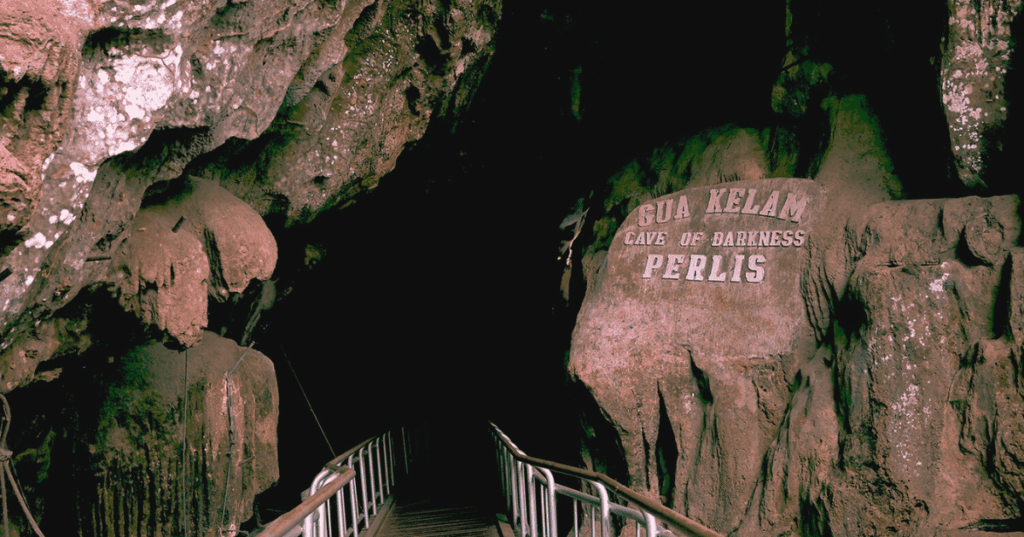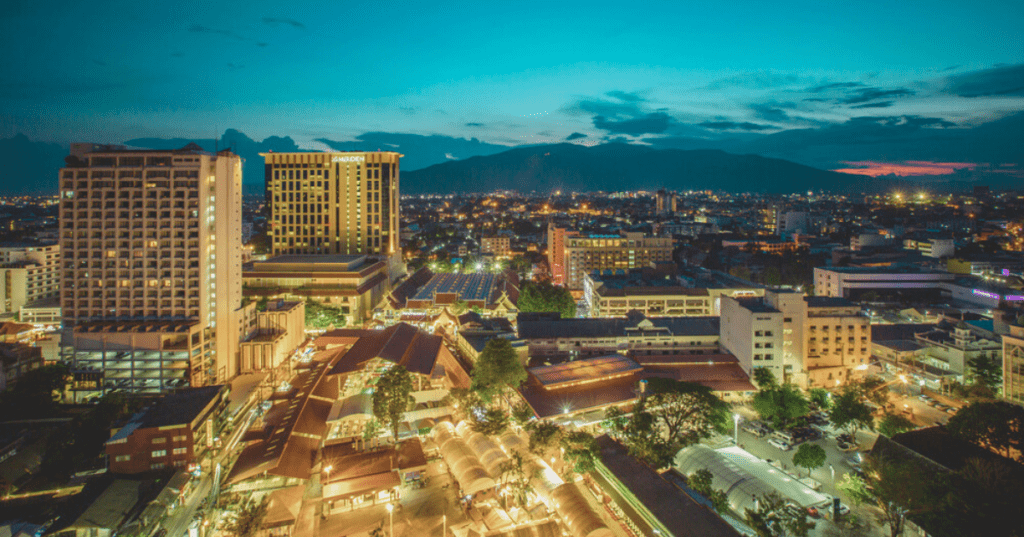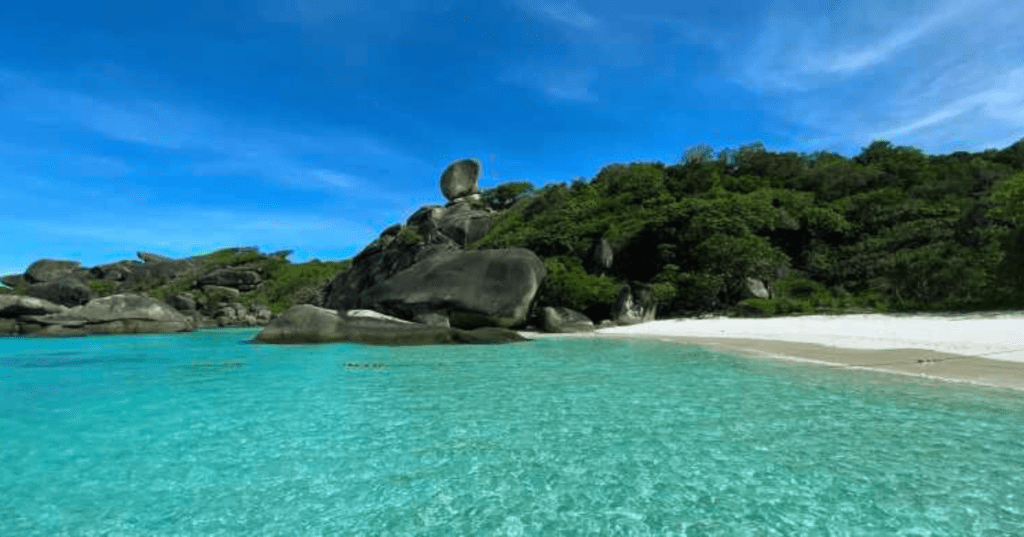Chiang Mai is a top reason to visit Thailand, offering a calm and relaxing atmosphere. Founded in 1296, this second-largest city has a peaceful vibe with green fields and forests near the historic center.
It is a place that combines history and spirituality with its streets. Located in the mountains of northern Thailand, the city is home to many ancient temples and old buildings, attracting tourists and pilgrims.
But Chiang Mai, Thailand’s second-largest city, has rich antiquities that remind us of its history as the capital of the Kingdom of Lanna. There are more than 300 Buddhist temples reflecting its past antiquity and rich culture.
In this post, I’m excited to share my trip to Chiang Mai’s Top Temples, the most amazing temple in Chiang Mai. Whether you are here to soak in the spiritual atmosphere or enjoy the architecture, you won’t want to miss these temples.
Chiang Mai’s Top Temples
Chiang Mai is full of temples, but with over 300 to choose from, it can be hard to know where to start. So, let me take you on a personal tour of my favorites. These temples aren’t just buildings—they’re the heartbeat of Chiang Mai, each with its own story, beauty, and spiritual significance. I’ve walked these grounds myself, and I’m excited to share what makes each one special.
Related Post: Hidden Gems of Bangkok: Ancient City, Old Siam Plaza, and Museum Siam
1. Wat Phra That Doi Suthep

Wat Phra That Doi Suthep is a famous temple high up on a mountain in Chiang Mai. It’s not just a temple; it’s an important symbol of the city. The journey to get there is part of the fun. You’ll climb 306 steps decorated with beautiful serpent statues, leading you to the entrance of the temple.
When you reach the top, you’ll see a stunning golden stupa (a type of tower) that shines brightly in the sunlight. This stupa is believed to hold a relic of the Buddha, making it a very sacred place in Northern Thailand. Around the stupa, there are statues, bells, and colorful murals showing the life of the Buddha. The view from the temple is amazing—you can see all of Chiang Mai spread out below, surrounded by lush green hills.
While the temple is a popular tourist destination, it retains a deep sense of peace and reverence. Many visitors join a traditional blessing ceremony where monks chant prayers and sprinkle holy water. Wat Phra That Doi Suthep is a worthwhile visit, regardless of your reason for visiting—it is a spiritual place with amazing views.
Address: 9 Mueang Chiang Mai District, Chiang Mai
Opening Hours: 6:00 am – 8:00 pm
Entrance Fee: 30 baht (~US$0.85) for foreigners
2. Wat Chedi Luang

In the center of Chiang Mai’s old city stands Wat Chedi Luang, a historic temple. Its name means “The Temple of the Great Stupa,” and it’s known for its big, tall chedi (tower). Once, this chedi was 82 meters high, making it the tallest building in the city. But after an earthquake in the 16th century, part of it fell.
Even with the damage, the chedi is still impressive. It’s made of huge bricks and surrounded by statues of elephants. You can still see how grand it used to be. Wat Chedi Luang was also home to the famous Emerald Buddha before it was moved to Bangkok. Now, a replica of the Emerald Buddha is here, and it attracts many visitors.
A special activity at Wat Chedi Luang is the Monk Chat program. You can sit and talk with a monk about Buddhism, Thai culture, or everyday life. It’s a great chance to learn more about the religion and the local way of life in a friendly and relaxed setting.
Address: 103 Phra Pok Klao Road, Phra Sing, Chiang Mai
Opening Hours: 6:00 am – 6:00 pm
Entrance Fee: 40 baht (~US$1.15) for foreigners
3. Wat Phra Singh

Wat Phra Singh, often referred to as the “Temple of the Lion Buddha,” is one of Chiang Mai’s most important temples. Located within the old city walls, it’s renowned for its stunning Lanna-style architecture, which is beautifully preserved and celebrated. The temple was founded in the 14th century and has since become a spiritual center, particularly during the Thai New Year festival, Songkran.
The temple complex is home to several important buildings, but the most famous is Viharn Lai Kam, which houses the Phra Singh Buddha image. This Buddha statue is highly revered and is believed to have been brought from Sri Lanka. The vihara itself is a masterpiece, with its intricate wood carvings, gold leaf decorations, and murals depicting ancient stories.
Wat Phra Singh is not just a place of worship; it’s also a center of learning. The temple grounds are filled with monks, young and old, who are engaged in studies and daily rituals. Visitors are welcome to observe or even participate in some of the temple’s activities, offering a deeper insight into the spiritual life in Chiang Mai.
Address: 2 Samlan Road, Phra Sing, Chiang Mai
Opening Hours: 6:00 am – 8:00 pm
Entrance Fee: 20 baht (~US$0.60) for foreigners
4. Wat Chiang Man

Wat Chiang Man is the oldest temple in Chiang Mai, dating back to 1297. It was the home of King Mengrai, who founded the city. The temple showcases beautiful Lanna architecture, with traditional wooden buildings and intricate carvings.
What makes Wat Chiang Man special is its collection of old Buddha statues. Two important ones are the Phra Sila (a marble Buddha) and the Phra Sae Tang Khamani (a crystal Buddha). These statues are believed to have protective powers and are very respected by locals. The temple also has a striking chedi supported by stone elephants, which represent strength and protection.
Wat Chiang Man is a quiet and peaceful place in a busy city. It’s less crowded than some of the more popular temples, so you can explore at your own pace, enjoy the history, and find a calm spot to reflect.
Address: 171 Ratchaphakhinai Road, Sripoom, Chiang Mai
Opening Hours: 8:00 am – 5:00 pm
Entrance Fee: Free, but donations are appreciated.
5. Wat Suan Dok

Wat Suan Dok, or “Flower Garden Temple,” is a beautiful spot in Chiang Mai. It was originally built in a 14th-century royal flower garden. The temple stands out because of its large open area, which is different from other temples in the city.
The temple is famous for its white chedis (stupas), which hold the ashes of the Chiang Mai royal family. These bright white structures look stunning against the golden pagoda behind them.
The main hall at Wat Suan Dok is one of the biggest in Chiang Mai and features a large Buddha statue that’s over 500 years old. The temple is also a key place for Buddhist studies, with a university for monks on its grounds. Visitors can join meditation sessions or participate in Monk Chat programs, where you can talk with monks and learn more about Buddhism.
Wat Suan Dok is a great place to visit, especially at sunset. The golden spires of the chedis glow beautifully as the sun sets. It’s a calm and peaceful spot, perfect for those wanting to connect with the spiritual side of Chiang Mai.
Address: 139 Suthep Road, Suthep, Chiang Mai
Opening Hours: 6:00 am – 9:00 pm
Entrance Fee: Free, but donations are appreciated
6. Wat Umong

If you’re looking for a quiet escape from the city, Wat Umong is a great choice. This 700-year-old temple is set in a forest at the base of Doi Suthep mountain. It’s different from other temples in Chiang Mai.
Wat Umong is known for its old tunnels. These tunnels were built a long time ago and were used to confine a monk who often wandered off into the forest. The tunnels are dimly lit by small openings in the ceiling, giving them a peaceful, mysterious feel. Inside, you’ll see Buddha statues and shrines where people come to meditate.
The temple grounds are large and include a pond with fish, turtles, and even some deer. There are signs with Buddhist teachings in English around the area, offering wisdom and a chance for reflection.
Wat Umong is a quiet, serene place where you can meditate, take peaceful walks, or simply enjoy the calm surroundings. Its unique atmosphere makes it a hidden gem worth visiting.
Address: 135 Moo 10 Suthep, Mueang Chiang Mai
Opening Hours: 6:00 am – 5:00 pm
Entrance Fee: Free, but donations are appreciated.
7. Wat Phra That Doi Kham

Wat Phra That Doi Kham, also known as the “Temple of the Golden Mountain,” is another lesser-known but equally stunning temple in Chiang Mai. Situated on a hill south of the city, this temple offers panoramic views of the surrounding mountains and valleys. The temple is famous for its enormous seated Buddha statue, which can be seen from miles away and adds to the temple’s grandeur.
Wat Phra That Doi Kham is particularly popular among locals who come to pray for good fortune, especially in areas like wealth, love, and success. The temple grounds are adorned with colorful flower gardens, adding to the serene and picturesque setting. Visitors can walk around the large Buddha statue, spin the prayer wheels, and enjoy the peaceful atmosphere.
One of the highlights of visiting Wat Phra That Doi Kham is the chance to experience local culture firsthand. The temple is often bustling with activity, especially during religious festivals, when the air is filled with the sound of chanting, music, and the smell of incense. It’s a vibrant and lively place, offering a different perspective on Chiang Mai’s spiritual life.
Address: Doi Kham, Mae Hia, Mueang Chiang Mai
Opening Hours: 6:00 am – 6:00 pm
Entrance Fee: Free, but donations are appreciated
FAQs
1. What should I wear when visiting temples in Chiang Mai?
When visiting temples, it’s important to dress modestly. Wear clothes that cover your shoulders and knees. Long pants and sleeves or a long skirt and shirt are ideal. Avoid wearing revealing or flashy clothing. Many temples provide cover-up clothing, but it’s best to come prepared.
2. Are there any entrance fees for the temples?
Yes, most temples in Chiang Mai have a small entrance fee for tourists. Fees usually range from 20 to 50 baht (~US$0.60 – $1.50). Some temples, like Wat Phra That Doi Suthep, have a higher fee. Local temples often welcome donations instead of or in addition to an entrance fee.
3. Can I take photos inside the temples?
Photography is generally allowed outside the temple buildings and in some interior areas. However, always check for signs indicating restrictions and be respectful of any areas where photography is prohibited. It’s best to ask if you’re unsure, especially in places where people are meditating or praying.
4. How long should I plan to spend at each temple?
This depends on your interest and the size of the temple. Typically, spending about 1 to 2 hours at each major temple is a good estimate. Smaller temples might take less time, while larger or more intricate ones could take longer.
5. Are the temples accessible for people with disabilities?
Accessibility varies from temple to temple. Major temples like Wat Phra That Doi Suthep may have steps and uneven paths, which can be challenging. Wat Suan Dok and Wat Chiang Man are more accessible, with paved paths and fewer steps. If you have mobility concerns, it’s best to check the specific temple’s accessibility in advance.
6. Is it safe to visit the temples alone?
Yes, it is generally safe to visit temples alone. Chiang Mai is a popular tourist destination, and the temple areas are usually well-frequented by visitors. However, as with any travel, it’s wise to stay aware of your surroundings and keep your belongings secure.
7. Can I participate in temple ceremonies or events?
Visitors are often welcome to observe or even participate in temple ceremonies, especially during festivals or special events. If you’re interested, you might also join in local customs or rituals. It’s respectful to ask for permission if you’re unsure.
8. What are the best times to visit the temples?
Early morning or late afternoon is ideal to avoid the midday heat and crowds. Early morning visits to Wat Phra That Doi Suthep offer a serene experience with fewer tourists. Late afternoon is also a great time to visit Wat Suan Dok for beautiful sunset views.
9. Are there guided tours available for the temple visits?
Yes, many local tour companies offer guided tours that include visits to several temples. These tours can provide in-depth information about the history and significance of each temple, making your visit more informative and enriching.
10. Where can I find food and drinks near the temples?
Most major temples have local markets or small eateries nearby where you can find refreshments. Wat Phra That Doi Suthep has a few food stalls at the base of the mountain. In the old city area, near Wat Chedi Luang and Wat Phra Singh, there are numerous restaurants and street food vendors.


